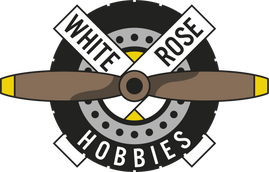
ScaleTrains Rivet 38507 HO Scale Thrall 48' Coil Steel Car "Distressed/Patched" CTRN 500077
In the 1960s, the Ford Motor Company, collaborating with two Detroit-area railroads, created the modern coil steel car design. Over the years, several freight car manufacturers built similar cars, including Thrall Car Manufacturing which constructed these 48-foot, twin hood cars in the 1980s and 1990s. The first Thrall cars had a 100-ton capacity, but later versions were built to a 125-ton capacity. Wearing the protective hoods, the car can carry coils up to 7 feet in diameter. They can carry coils up to 10 feet with the hoods removed. The flat-top hoods from the first designs have been replaced with a rounded top design that is both easier to manufacture and is stronger.
The all-new Rivet Counter™ HO Scale Thrall Manufacturing 48’ 2-Hood Coil Steel Car is the definitive model of this unique freight car. True to the prototype, the car features railroad, road number, and era-specific™ features like 5 unique hood versions; as-delivered or contemporary paint schemes; 4 positionable load dividers; 4 large unwrapped coil steel loads with metal weight inside each; a finely detailed body with dual trough design and center divider; plus 16 walkway side supports and simulated wood trough interior. Depending on the type of steel you’re hauling, the car can be used without hoods as well.
Strip or sheet steel has long been a major component in the manufacturing of many different products including pipes, tanks, household appliances - both large and small, industrial shelving, machinery, freight cars, and especially automobiles. Cold-rolled or hot-rolled, varying in width from less than an inch to ten feet, and ranging in thickness from 1/64th of an inch to 1/4th of an inch, the steel was originally cut into sheets in customer specified lengths. After World War II, winding the steel strip into a coil almost completely replaced the sheets. The steel coil with 3,000 to 5,000 feet of steel is much easier to handle and transport than a stack of steel sheets. Coils are also far more versatile than a sheet that may be too long for one usage or too short for another.
The biggest challenge for railroads and the automobile industry, the primary user of coiled steel, was how to transport it efficiently. In the 1960s, the Ford Motor Company, working with the Detroit Toledo & Ironton and the Chesapeake & Ohio railroads, came up with the design of the coil steel car. The original design was a heavy-duty frame with two 24-foot troughs covered by hoods made of thin steel. The troughs and movable load dividers prevented the coils from rolling side-to-side or sliding while the hoods protected the coils from the weather. Several freight car builders built coil steel cars, including Thrall Car Manufacturing which built these 48-foot, twin hood cars in the 1980s and 1990s. The first Thrall cars had a 100-ton capacity, but later versions were built to a 125-ton capacity. Wearing the protective hoods on, the car can carry coils up to 7 feet in diameter. They can carry coils up to 10 feet with the hoods removed. The flat-top hoods from the first designs have been replaced with a rounded top design that is both easier to manufacture and is stronger.
FEATURES:
- All-new model
- Era: 2014 to Present
- Series 500001 to 500177, built 8-10/93
- Faded paint scheme
- Reporting mark and road number patched on one side
- Conspicuity striping
- 1 x Version 1 Hood – BNSF: No corner reinforcement, long side handrail, hood stacking brackets with outer extensions, BNSF hood end sheet reinforcements
- 1 x Version 2 Hood - BNSF: Corner reinforcement, short side handrail with grab irons, hood stacking brackets with outer extensions, BNSF hood end sheet reinforcements
- Fully-assembled
- Multiple road numbers
- Body with dual trough design and center divider, sixteen walkway side supports and simulated wood trough interior. Designed for the use of two hoods although, depending on the type of steel, the car can be run without hoods as well.
- Body has four wireform side grab irons and four wireform end grab irons
- Each hood is constructed with up to 27 individual parts including 12 photo etched handrail stanchions, six wireform handrails, four wireform grab irons, two hood stacking brackets, two hood top braces, and lifting bail
- Handbrake housing with finely detailed wheel and chain
- See-through photo-etched metal walkway
- Simulated wood interior floor using a hand applied wash
- Four (4) positionable load dividers
- Four (4) large unwrapped coil steel loads with metal weight inside each
- Factory-applied end handrails, hood guides, stanchions, load divider tracks, metal grab irons, coupler cut levers, and trainline hoses with silver gladhands
- Complete underbody brake system with over 20 separately applied parts including air reservoir, control valve, and retainer valve plus wireform plumbing and trainline pipe with brackets
- Durable body-mounted die-cast metal semi-scale SE Type lower shelf knuckle couplers
- Highly-detailed Barber S-2 100-ton trucks with finely rendered raised foundry data, rotating bearing caps, side bearing detail, and separate brake beam detail
- Printed reporting mark and road number on all four trucks
- 36” machined metal wheels with accurately profiled .110" wide wheel tread
- Operates on Code 70, 83 and 100 rail
- Printing and lettering legible even under magnification
- Paint colors match Tru-Color Paint color: TCP-346 SP Caboose Brown (for as delivered cars)
- Weighted to Industry standards for reliable operation
- Packaging safely stores model
- Recommended radius 18”



